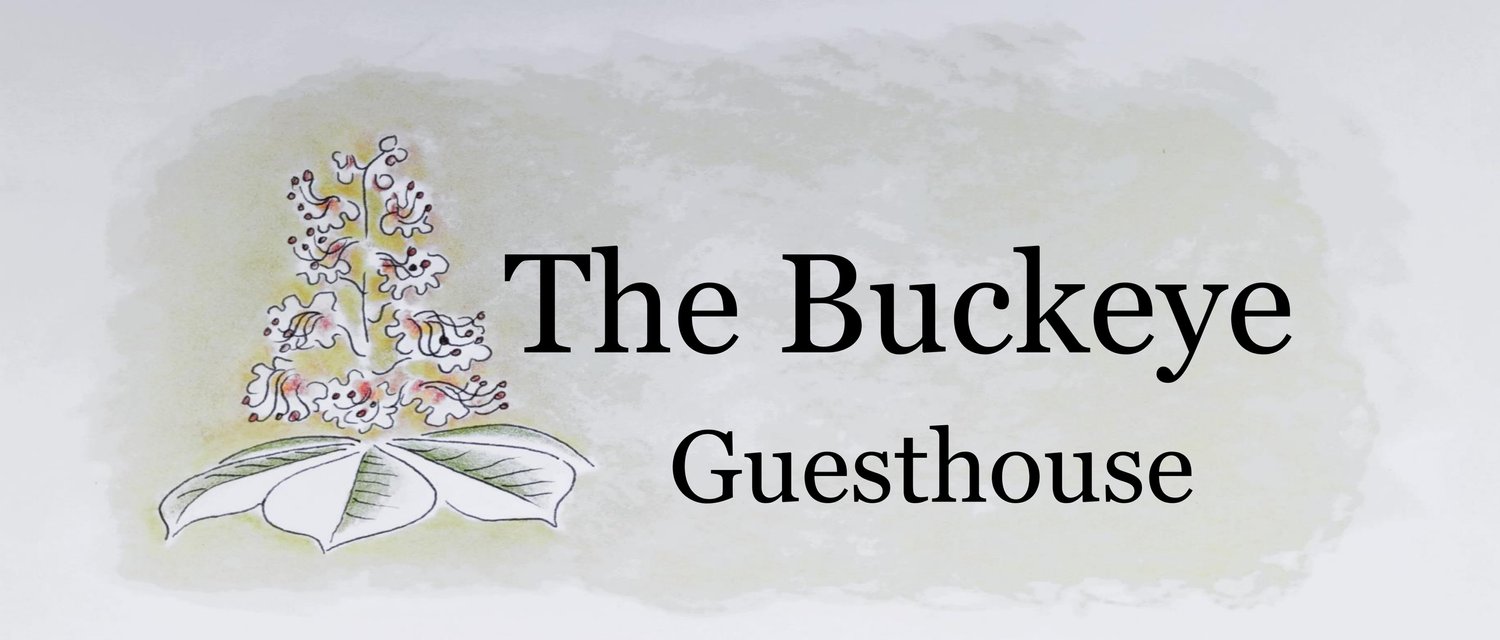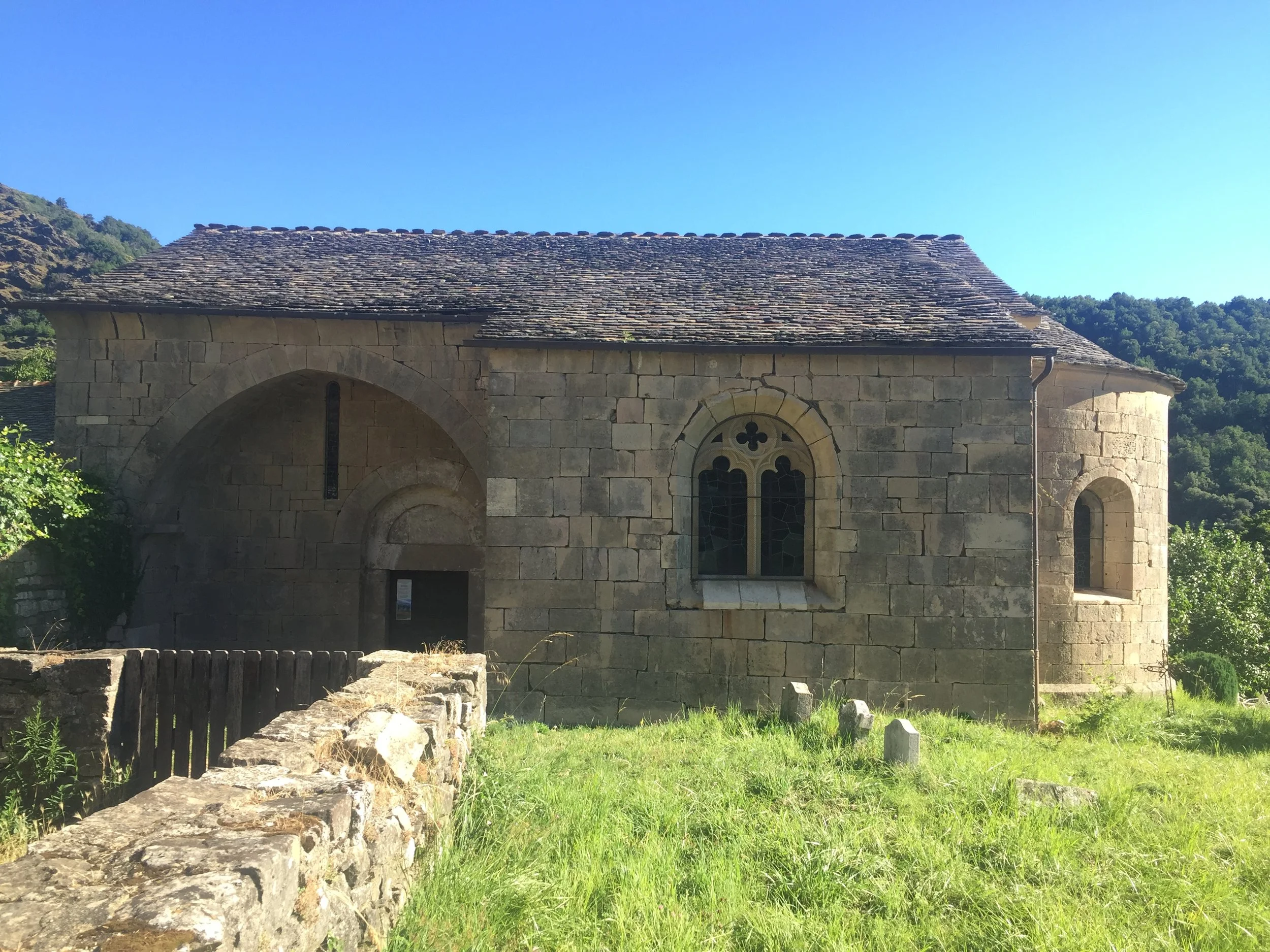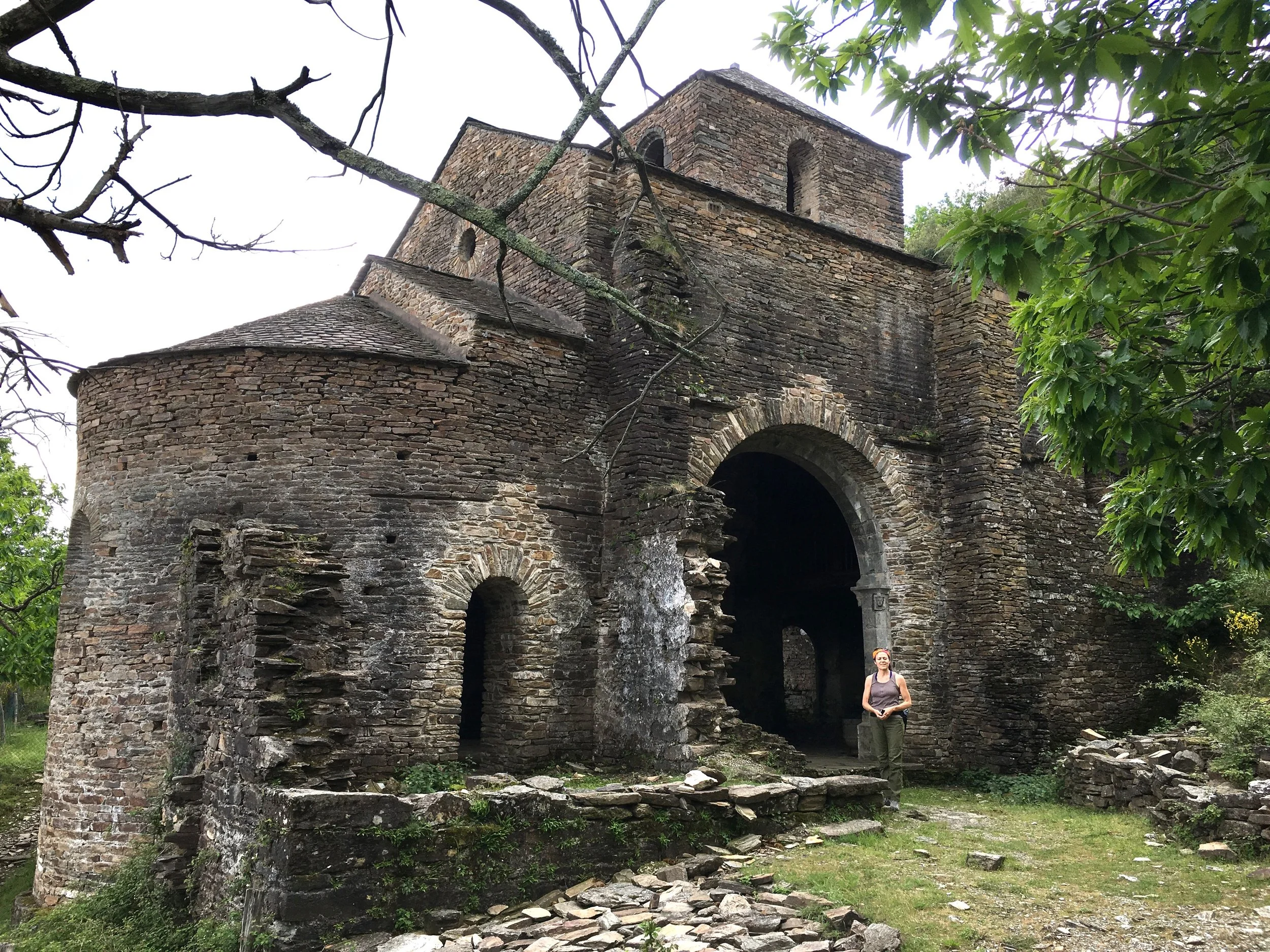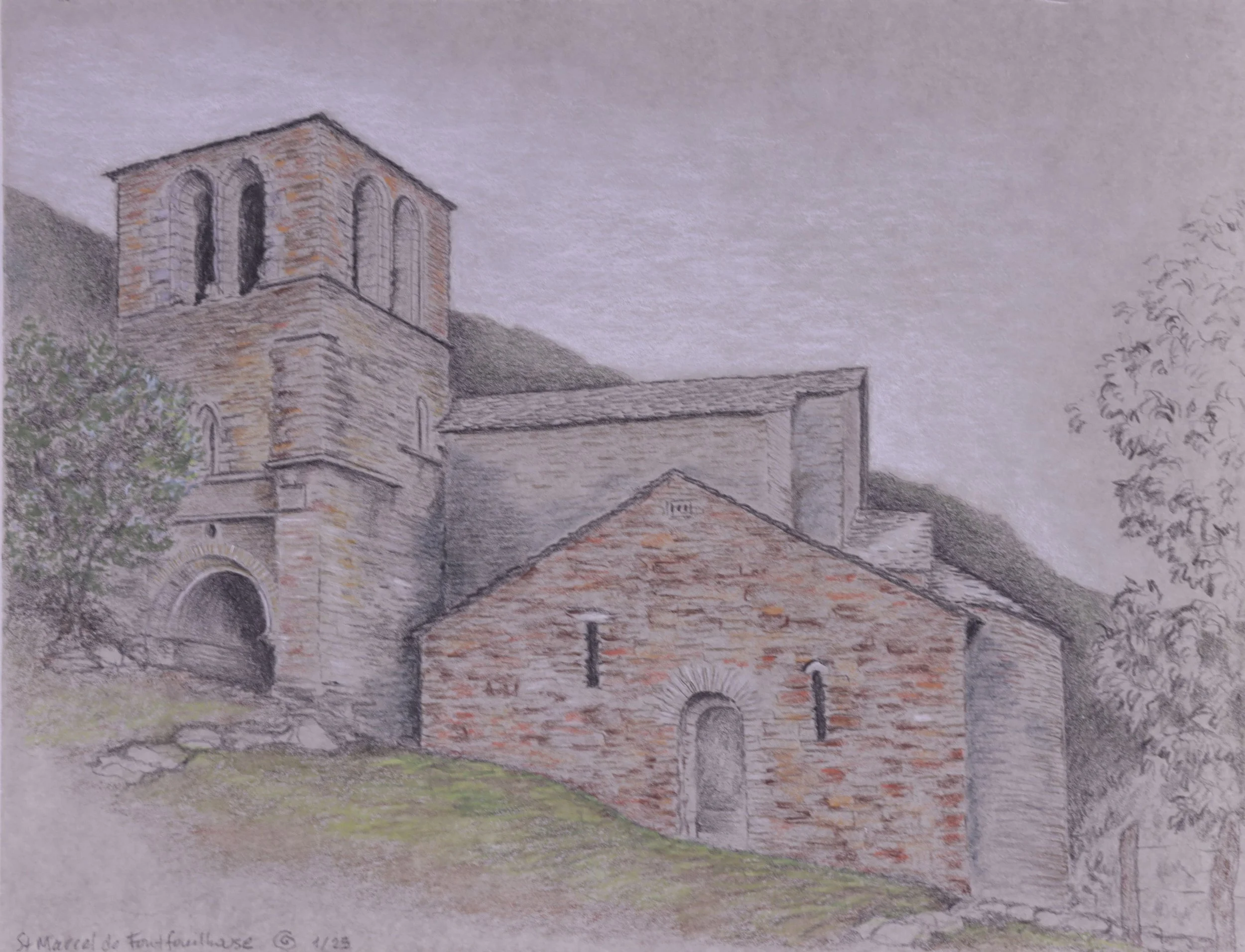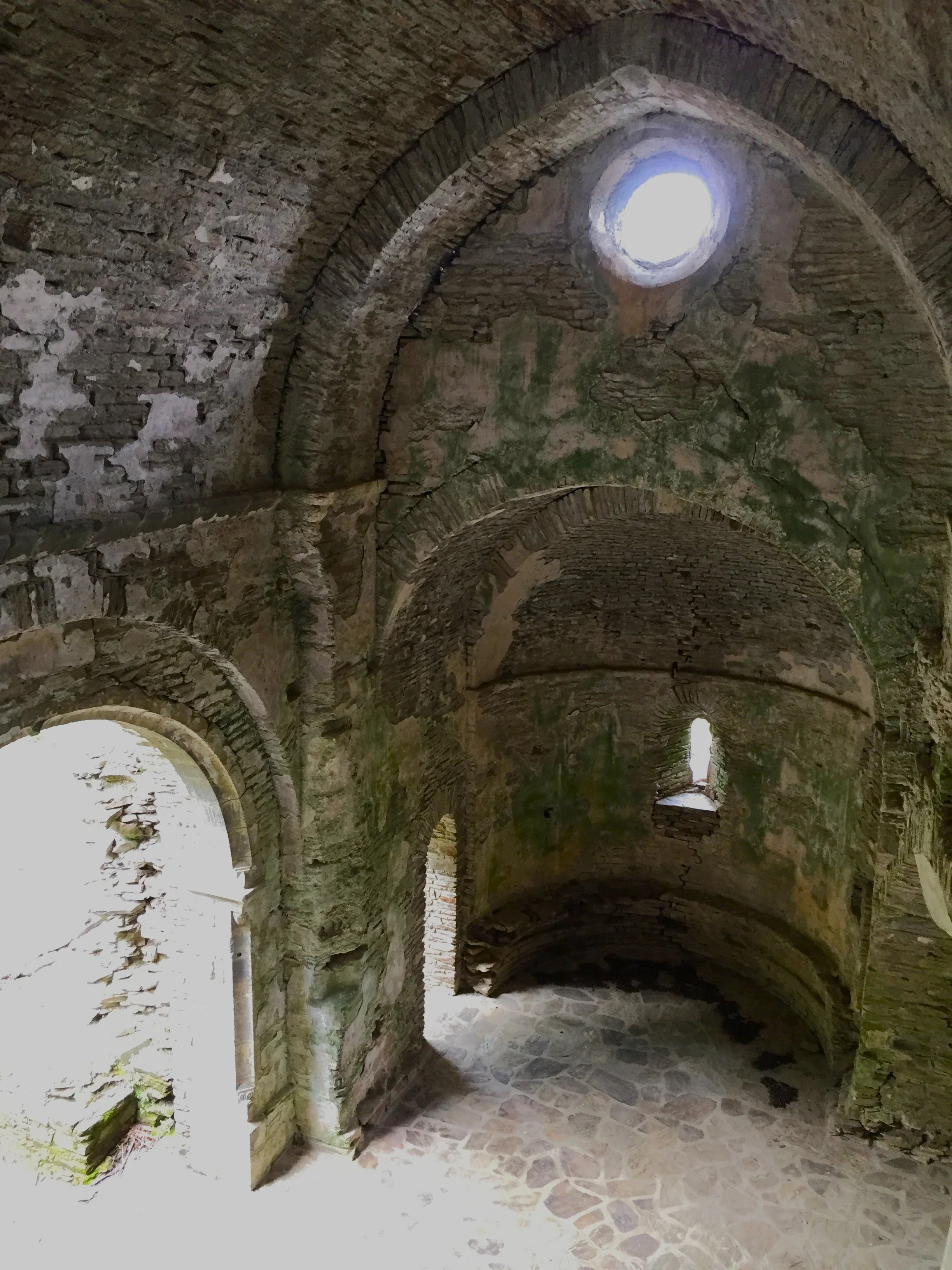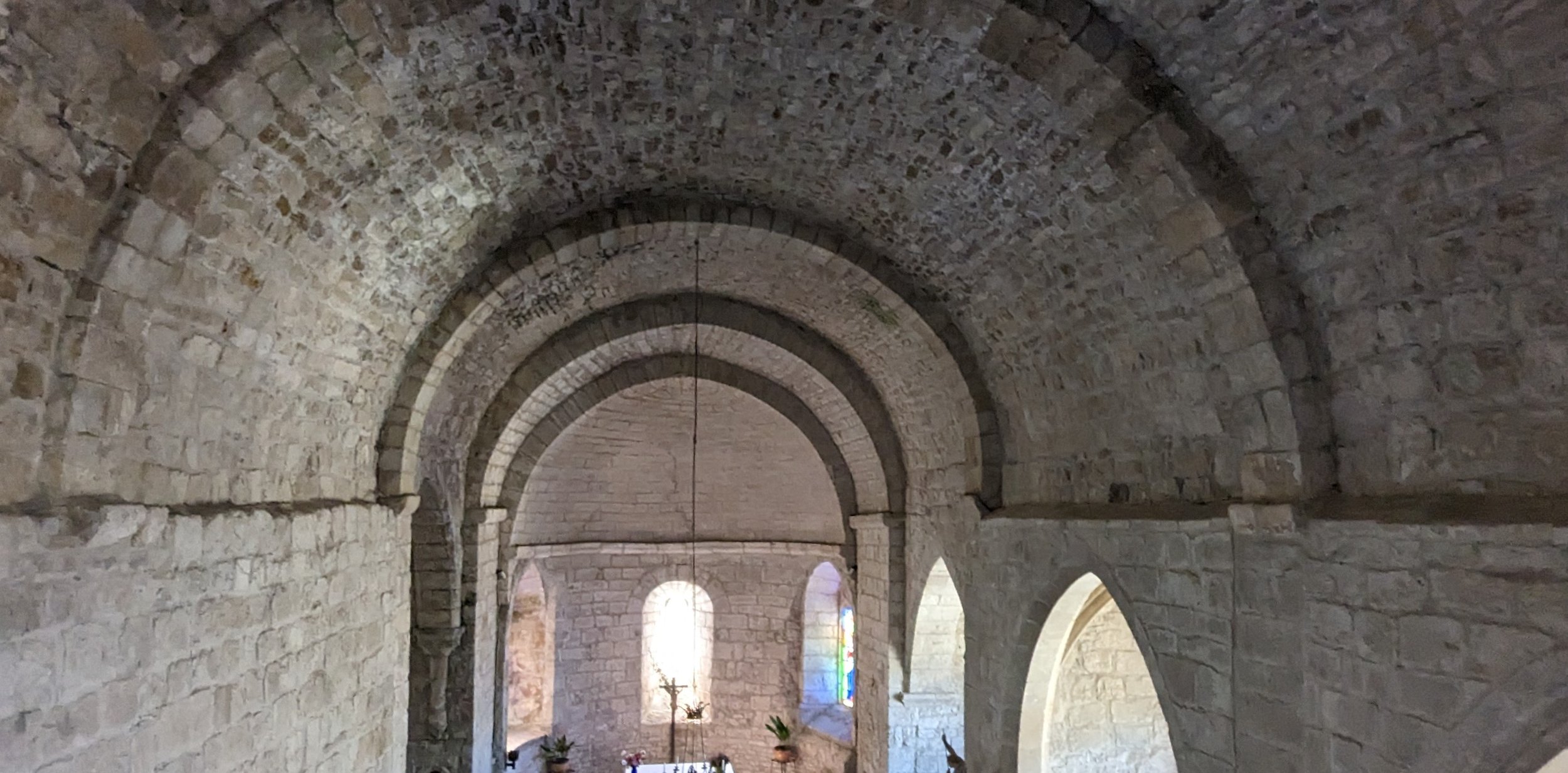
Romanesque Churches
There are some special Romanesque churches in the valleys close to my place. I began to find these when I was hiking, and I soon discovered that the National Park has a brochure with a driving tour to visit 7 of them. I decided to do drawings of each of them. As I was sketching I jotted down reflections that are shared here with the images. But first an overview:
Because of the nature of the terrain here, people did not concentrate in towns or even villages long ago. They lived by their fields and with their livestock. They had a need to come together for their sacred practices.
What is a Romanesque church in this part of France? It is not stylistically as pure as what you find in Italy. However, because they date to the early Christian era, and despite being destroyed and rebuilt multiple times, these churches all have elements descended from Roman architecture, which favored classical geometrical forms such as semi-circular arches and logical, rectangular volumes.
But the basic Romanesque edifice became a depository over time, where artisans and their patrons embellished, adorned, added, or repaired things in a more local dialect. They wanted to leave their tag in stone. Thus we find surprises, things that defy platonic solidity and uniformity. Things that defy authority, cryptic messages.
Depending on the funding and political backing, and depending on the caprices of war, these places suffered long periods of disrepair, decay, or destruction during their thousand-plus-year lifespans. For most of the ones presented here we see the main structure built with cut stone, a premium that indicates the magnitude of the investment, and they all demonstrate impressive skill in their masonry.
Some of these do not have locked doors, so the interiors can be visited. This is a special treat. The interior light of the Romanesque is sublime, or perhaps haunting. I like to sit silently until I can feel the space inside myself.
The Temple of Molezon
The Temple of Molezon has a vulnerable quality. The masonry is cut stone, but the wall undulates like a soft curtain. I find the grand ogival arch very feminine, and gently defiant. She shelters the more rigid, round, romanesque arch of the door within.
La Boissonade
The severity of the black granite is softened by the felt presence of someone who loves this place. The rectory seems unoccupied, but the grounds are tended, the door to the church is open, the cherry trees are laden with fruit.
Sainte Croix Vallée Française
She is surrounded with the sound of children playing, a sleepy city hall, a flock of tombstones; and a county road encircles her on 3 sides. Like waves lapping at her rocky shores.
Saint Flour
The church is delicate, adorned with charming details, and eloquently poised in the landscape.
Saint Marcel de Fontfouilhouse
One arrives here by foot. It is remote and solitary. Those who have preserved this sacred place understood that it was meant to be cracked open: that is its consummation, it is a perfect ruin.
St André de Valborgne
The romanesque spirit is potent on the inside of the heavy walls. Between the X and XIII centuries the world was war-weary and plague-ridden. Perhaps the illiterate faithful sought solace in the face of the unknown. The darkness can reveal the light, as happens when a morning ray of sun passes into the cavernous apse of exposed masonry at St. André.
Barre-des-Cévennes
The village is perched, at once vertiginous and commanding. The church seems sunk into the top of the village. It feigns an entrance from the west, where an allée of plane trees leads to the facade that is dominated by its bell tower. Yet there is no door there, a face with no mouth, no explanation. Religion in the Cevennes has a history of subterfuge and extirpation.
